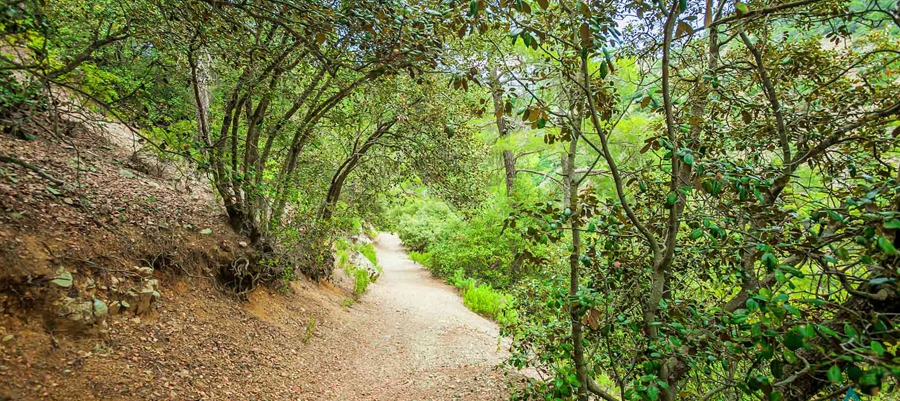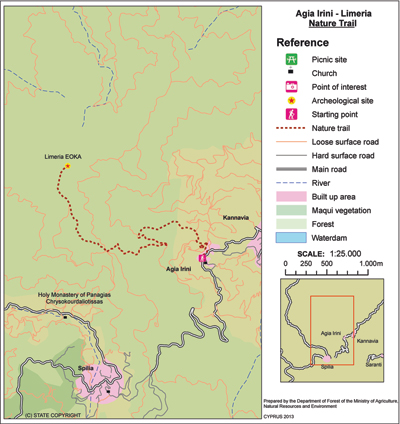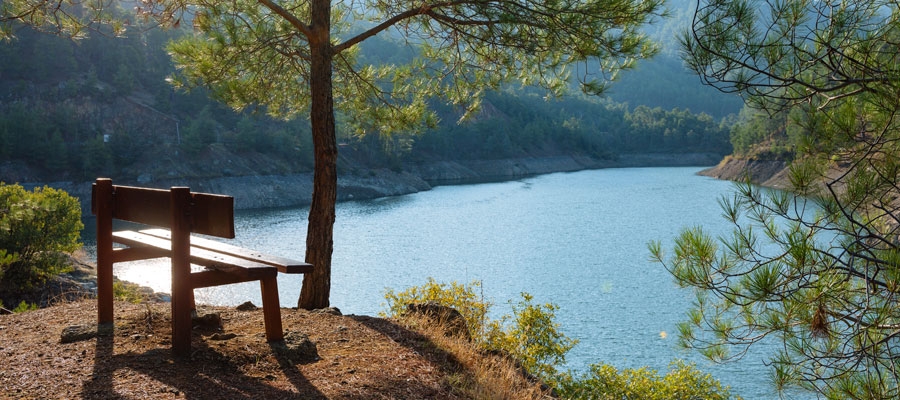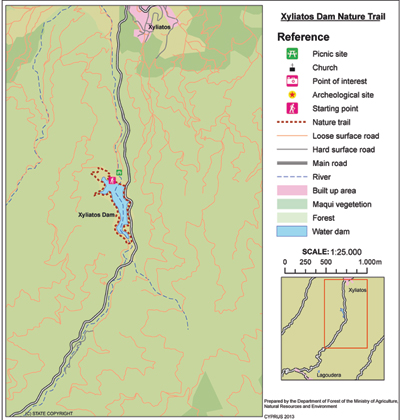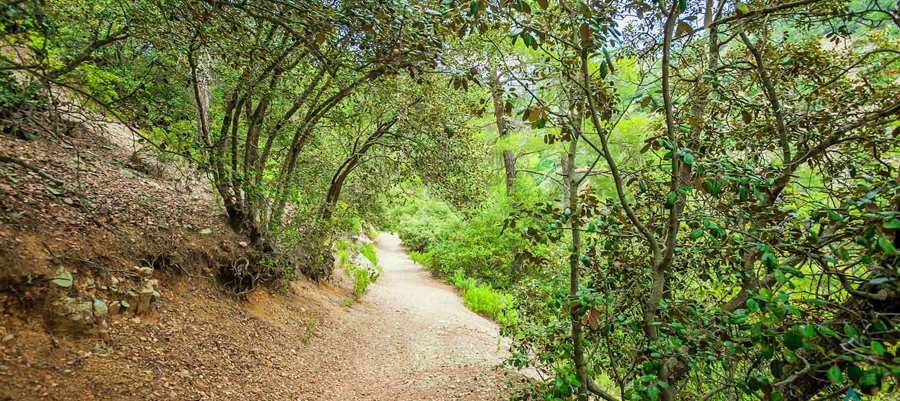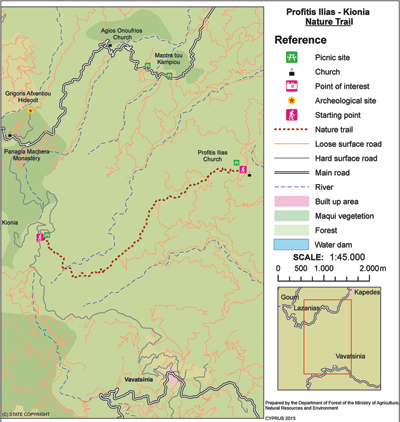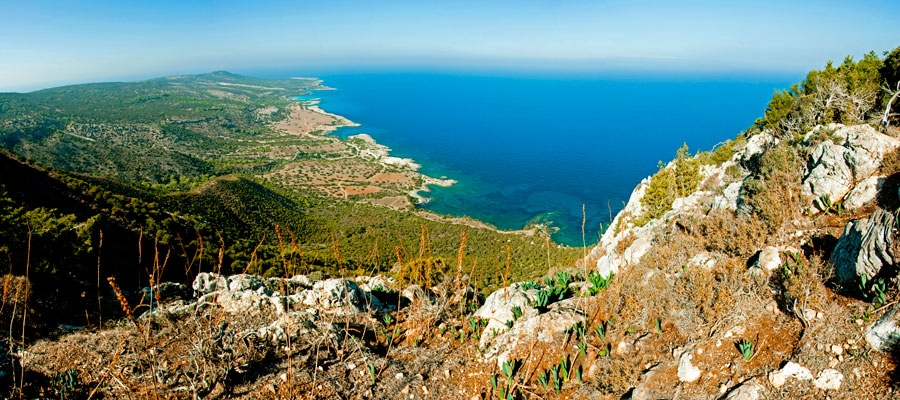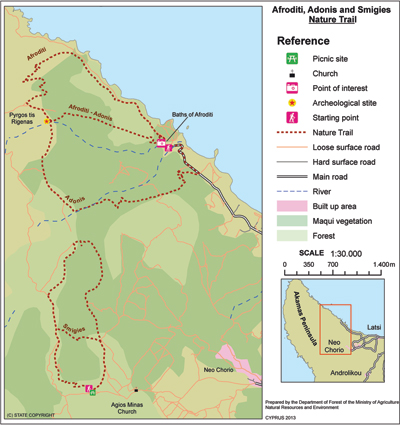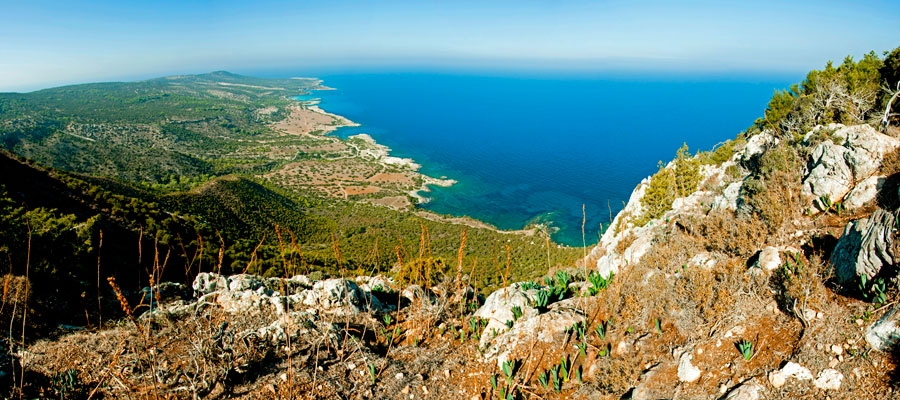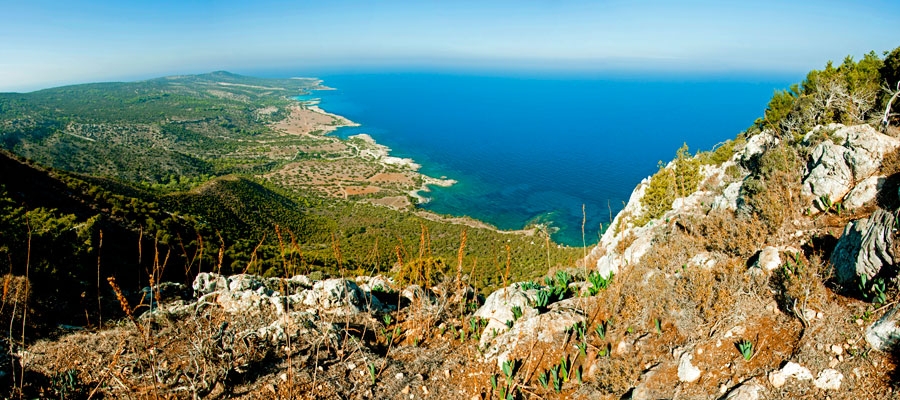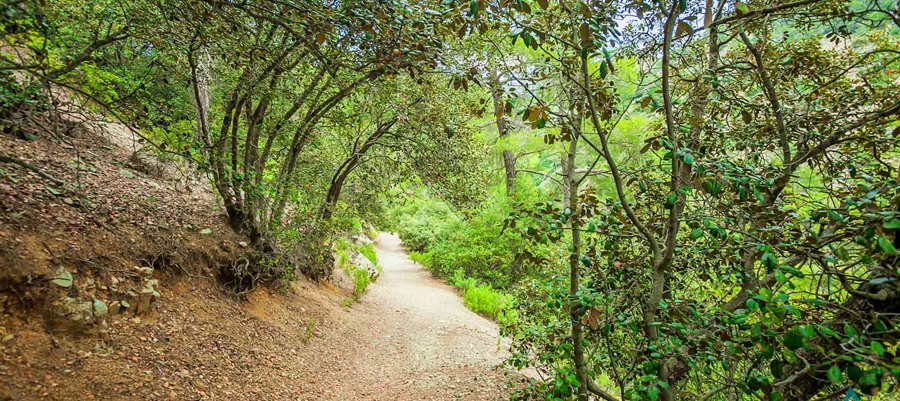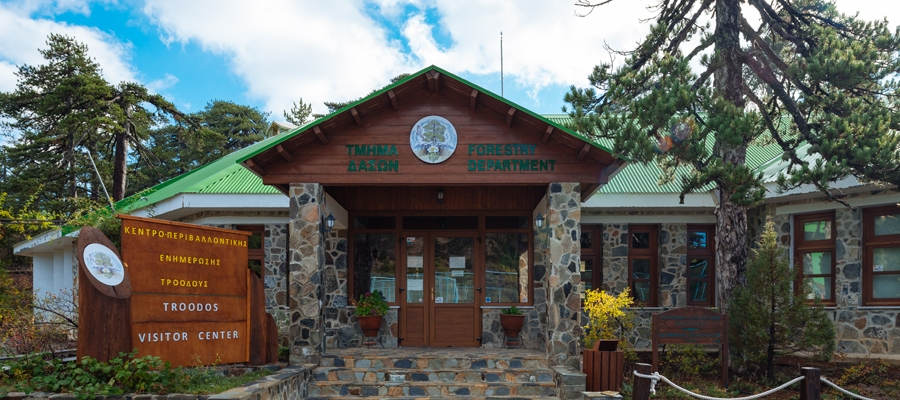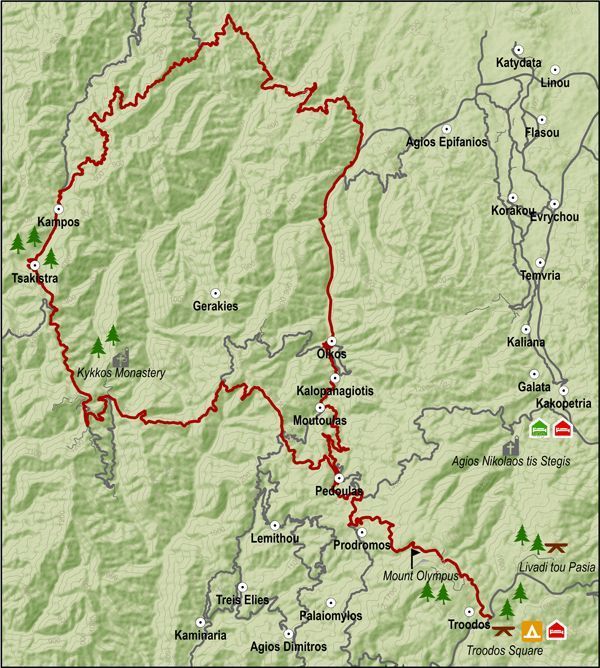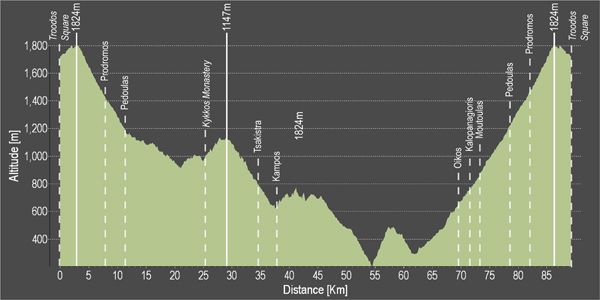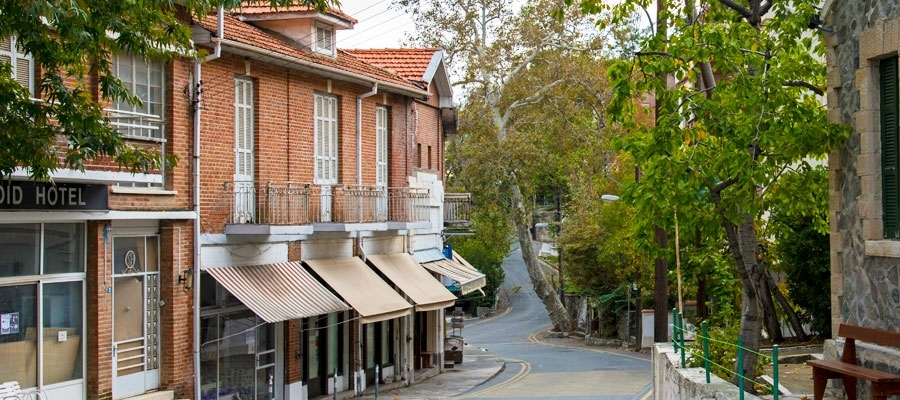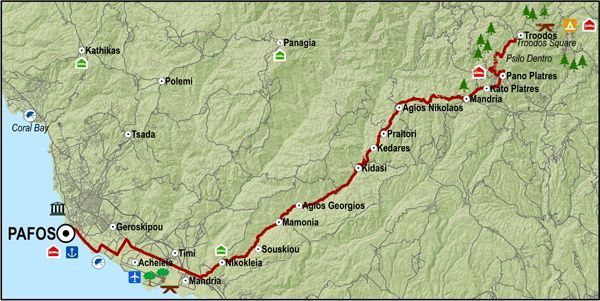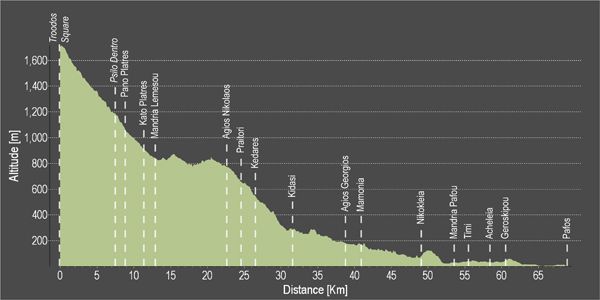According to tradition, the best way to really know a place is to walk it. And despite its petite size, the island of Cyprus encapsulates an impressive 10.000 years in its natural environs and diverse landscape that are ripe for exploring and discovering.
With a favourable climate all year round, the great outdoors of the island is easily accessible, and offers a myriad of opportunities to take a journey through nature, history and culture, thanks to the numerous signposted paths and nature trails. A total of 52 designated walking trails have been created to highlight the beautiful landscapes and strong Mediterranean character of the island. By walking them, you can see a treasure trove of varied fauna and flora, as well as the remnants of the island’s mining heritage and other interesting monuments.
Whilst some trails are more challenging than others, they are all a delight for the senses especially in the springtime months, when you can experience the sights, sounds and smells of nature in full bloom, and in all its vibrant glory.
Flora
There are 1.908 different plant species, subspecies, varieties, forms and hybrids that have been recorded in Cyprus to date. This number includes native and alien plants (exotic plants that are naturalized), but excludes cultivated plants. There are 142 endemic plants in Cyprus (found exclusively in Cyprus), which comprise the most important part of the island’s flora. Cyprus’ forests are mostly natural woodlands of great biodiversity and major ecological significance. Many of them have been classified as National Forest Parks and protected areas for flora and fauna, covering more than 70 percent of the NATURA 2000 network of the island.
The Calabrian pine (Pinus brutia) is the main forest tree found from the coastal area until an altitude of up to 1.200 – 1.400 metres, whilst the Black pine (Pinus nigra ssp. pallasiana) dominates in the higher reaches of Troodos.In large rivers and the areas surrounding them, the dominant trees are the oriental plane (Platanus orientalis) and the alder (Alnus orientalis), whilst there are other tree species found on the island on a smaller scale, such as the Cyprus cedar (Cedrus brevifolia) and the Mediterranean Cypress (Cupressus sempervirens).
Bush and shrubland also dominate the landscape. In middle and high elevations, the common bush species of golden oak (Quercus alnifolia) can be spotted on its own, in unmixed forests, or together with pines. In the lowlands you will find maquis shrubland, with dominant species the Phoenician juniper (Juniperus phoenicea), the (wild) olive tree (Olea europaea), the carob tree (Ceratonia siliqua) and the mastic tree (Pistacia lentiscus), as well as the Calabrian pine. Whilst walking along Cyprus’ nature trails you will encounter some of the many endemic plants that are in danger of extinction most of which have been included in the Berne Convention’s list of protected plants. Among these are:
-
The skilla a species of plant of the Hyacinthaceae family (Scilla morrisii)
-
Loch’s Gloryofthesnow (of Τroodos), (Chionodoxa lochiae)
-
Lefkara’s ankle (Astragalus macrocarpus ssp. Lefkarensis)
-
Kotschy’s orchid (Οphrys kotschyi)
-
The Cyprus tulip (Tulipa cypria)
Fauna
Cyprus also has a wonderful variety of habitats suitable for many species of animal due to the variety of landscapes on the island each with their own particular microclimate and topographical features and the variety of terrains and geological substrates, as well as the diversity of forest and agricultural vegetation.
Among the noteworthy mammals found on the island are:
-
The mouflon (Ovis gmelini ophion) a wild sheep species, found only in Cyprus. It is also the largest wild mammal that exists on the island.
-
The fox (Vulpes vulpes) Cyprus’ only carnivorous mammal.
-
The hedgehog (Hemiechinus auritus dorotheae) an endemic subspecies and a shy and reclusive animal.
-
Bats a remarkable feature of Cypriot fauna, and one of the most peculiar types of mammals, with 19 different species found on the island.
Cyprus’ geographical position makes it one of the most important migratory natural habitats and international birdlife organisations consider it among the most important areas in the world for its biodiversity of birds. It is also a unique location in Europe for endemic birds.
The butterflies of Cyprus, which belong to the order leptidoptera, are also considered of particular interest, with 52 species on the island nine of which are endemic to Cyprus.
Sights of Interest
Aside from the natural bounty you will find on the walking trails, some of the routes have been designed to give visitors the chance to discover Cyprus’ cultural heritage through various monuments that include Byzantine churches (UNESCO World Heritage Sites), Venetian bridges, mosques and other interesting sites.
Degree of Difficulty
All nature trails are divided into three categories of difficulty:
-
Category 1: Easy trail, with gentle gradient. Suitable for all ages and fitness levels.
-
Category 2: Average degree of difficulty, suitable for adults with fairgood fitness levels. Sudden changes in gradient (uphill and/or downhill), and/or course along narrow or rough terrain.
-
Category 3: High degree of difficulty. Route with difficult terrain such as sudden changes in gradient (uphill and/or downhill), course along particularly rough and/or slippery, and/or narrow and/or steep terrain. Suitable for adults with very goodexcellent fitness levels. Unsuitable for young children
Find out More!
Summarised information for each of the 31 hiking trails can be found in this section of the website, whilst a more detailed brochure – which includes valuable advice and tips on how to hike safely and comfortably, as well as maps is available to download here. For more detailed information for the full 52 designated trails from the Forestry Department, click here.

